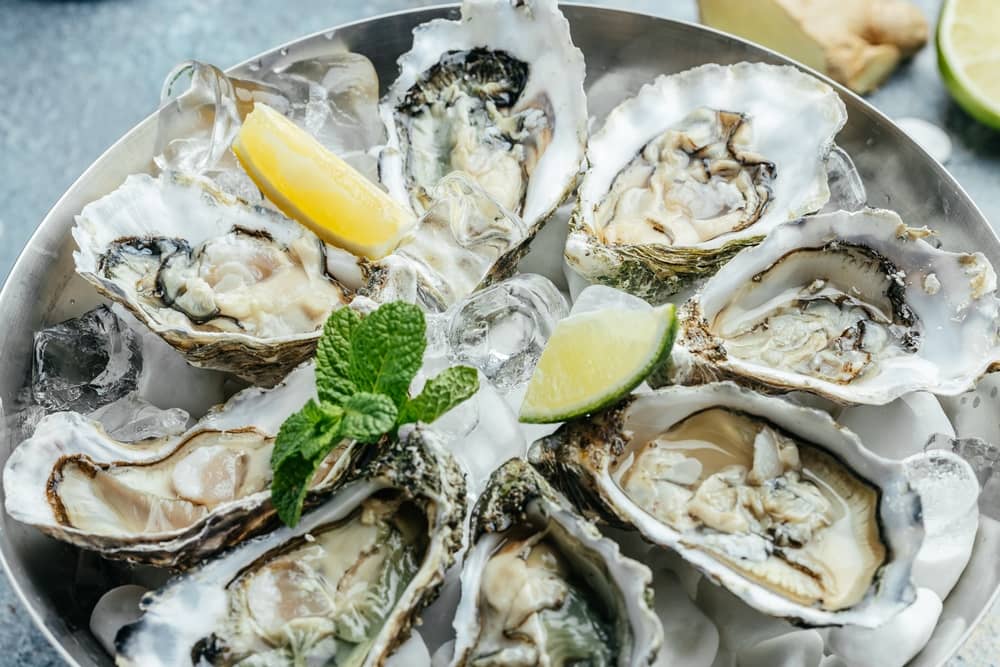
If you’re ready to dive into cooking another type of seafood that you haven’t experimented with yet, oysters might be a good one to start with. Like most seafood and shellfish, oysters can be cooked in a variety of ways, making them perfect for all types of home cooks. Whether you like to get dinner done in a snap or you don’t mind putting more time into cooking, there’s an oyster cooking method for you.
What are Oysters?
An oyster is a bivalve mollusk, meaning that it has two halves which are attached together with a hinge-like anatomy. This allows them to open and close as needed in their natural habitat. Although oysters are known for their pearls, not all oysters actually make pearls. Hence, why actual oyster pearls are so rare, coveted, and pricey.
In terms of flavor, oysters taste similar to the seafood they’re often compared to: clams. However, while clams can be salty in flavor and rubbery in texture, oysters are a bit more tender and subtle in flavor. This is why you’ll usually see oysters referred to as a delicacy in higher-end cooking.
How to Cook Oysters: 6 Popular Ways
The six cooking methods below aren’t the only ways to cook oysters (they can also be made into oyster stew, baked casseroles, oyster salads, and much more), but they’re methods that almost any oyster lover knows how to use. Try them out to see which one you like best!
Smoked Oysters
Smoked oysters are, as you may have guessed, cooked in a smoker. A smoker cooks food for a long time at a low temperature, resulting in a savory, smoky flavor that complements oysters well. Because oysters are so small, they don’t need as much time in the smoker as, say, roasts and steaks do. Generally, you can expect them to be cooked completely in about 90 minutes to two hours.
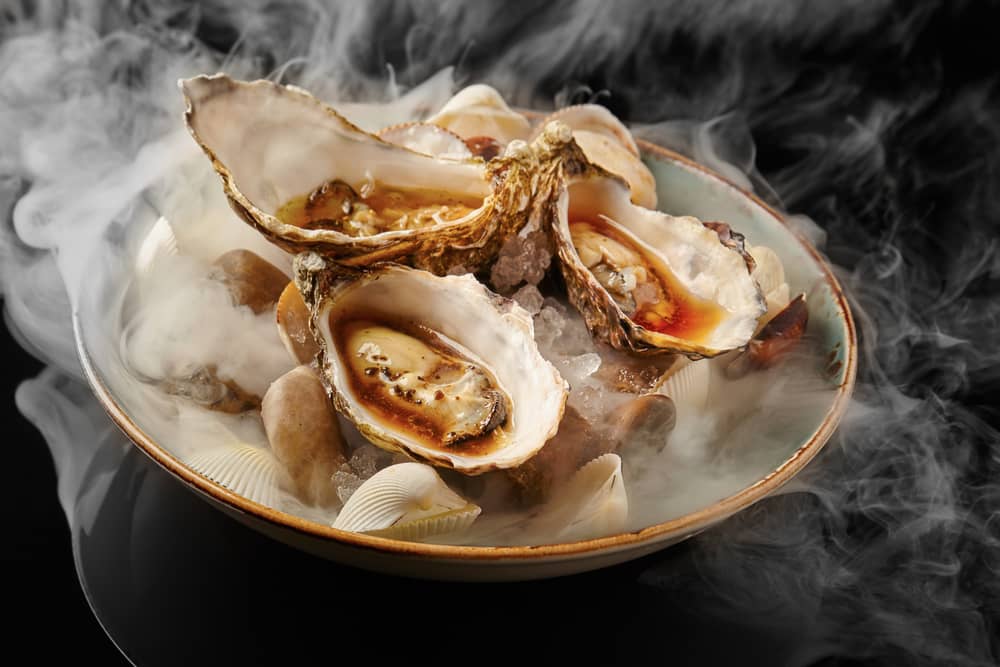
Steamed Oysters
Steaming requires a special steamer pot that keeps oysters over boiling water rather than in the water. Steaming oysters allows the steam to cook them through in just a few minutes without stripping them of their natural juices. If you boil oysters, you can lose out on those natural juices, resulting in chewy, dry meat. Steaming is also one of the healthiest ways to cook oysters, as it doesn’t require olive oil or other ingredients that could add calories and fat.
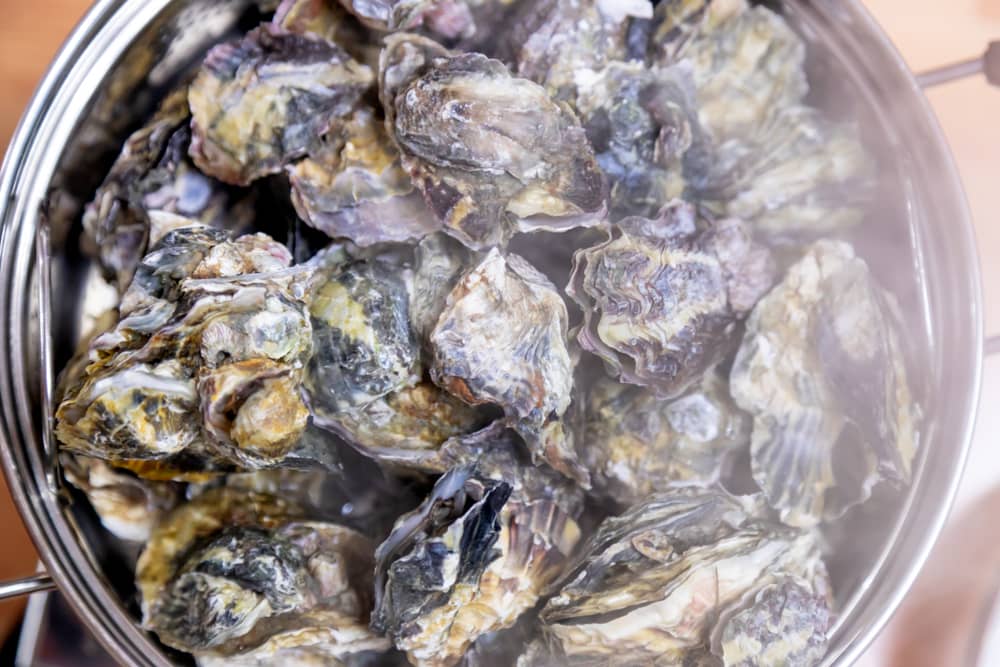
Pan Fried Oysters
To pan fry oysters, you’ll need to shuck them first. Shucking oysters is the process of opening up their shells and removing the meat. Pan fried oysters are prepared by dredging the meat in an egg bath, followed by covering them in spiced bread crumbs. Then, you place the covered oyster meat in a heated frying pan with oil, browning them on both sides. Obviously, this isn’t the healthiest way to eat oysters, but it’ll definitely please your palate.
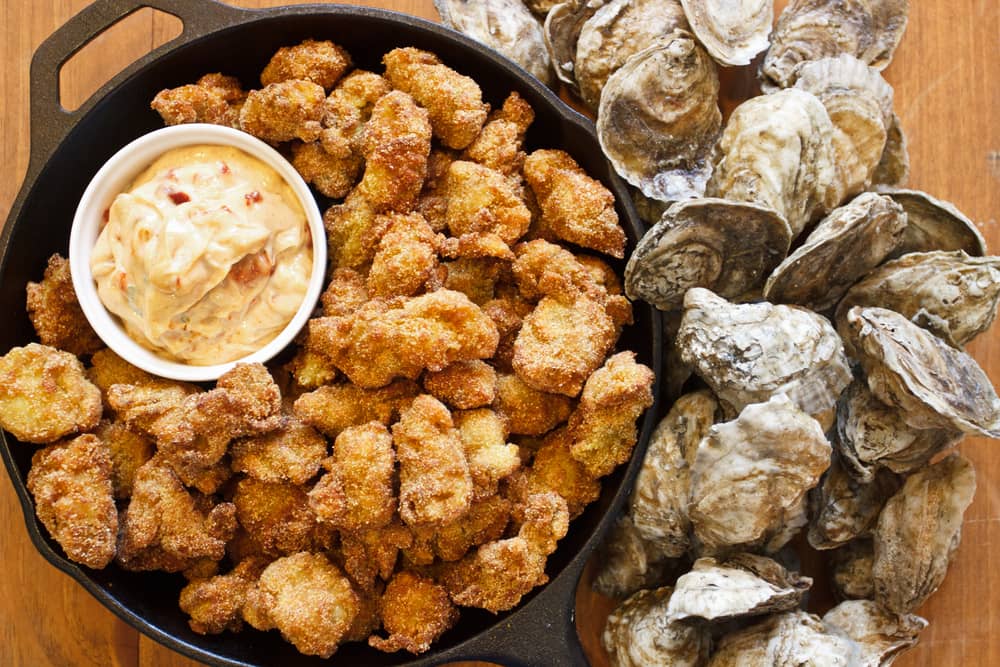
Fried Oysters
There’s a pan fried oyster and then there’s a fried oyster. Fried oysters are similar to pan fried oysters in that they’re shucked and covered with a breading before frying. However, fried oysters go into a deep fryer filled with oil rather than a pan. This cooking method allows them to cook all the way through at once, making the process a bit quicker and more hands-off.
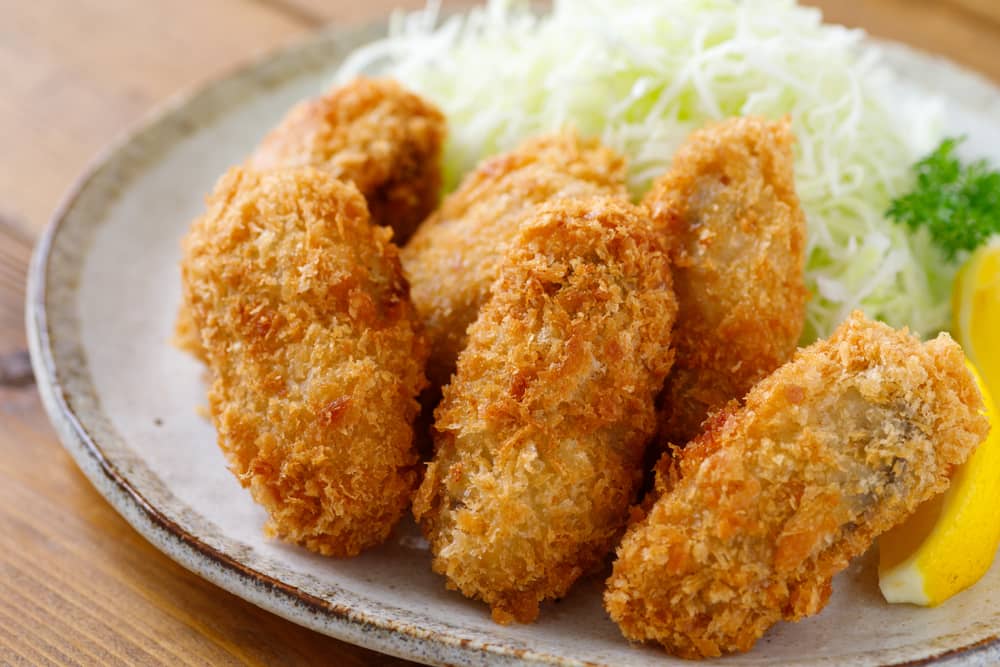
Grilled Oysters
No matter what type of oysters you love, you need to at least try grilled oyster once. Usually, grilled oysters are kept in their shell while grilling. You can add marinades or spices as you please. Parmesan cheese, salt, and pepper are simple additions and some of the best, in our opinion! You can also add a tablespoon of butter to each oyster to help them crisp up on the grill. Oysters are usually done within 10 minutes when cooked on high heat.
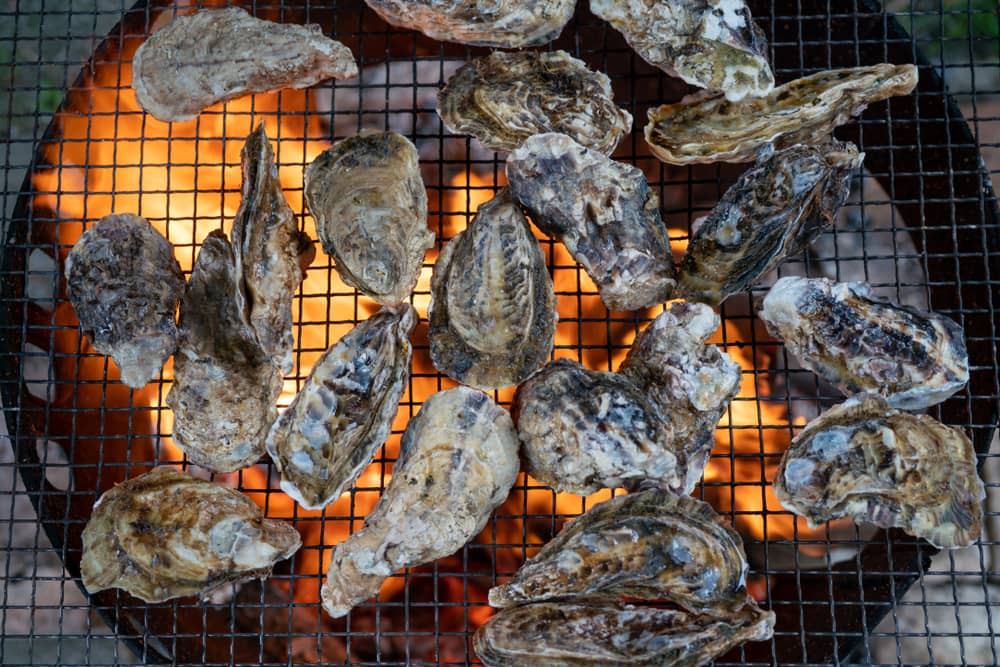
Baked Oysters or Roasted Oysters
There’s not much of a difference between baking and roasting other than the temperature at which they’re done (roasting has a bit higher temperature). You can cook oysters either way. A baked or roasted oyster stays in its shell and gets topped with spices or different ingredients, like cheese or stuffing. There’s quite a variety of directions you can go with this cooking method, making it one of the most fun to experiment with.
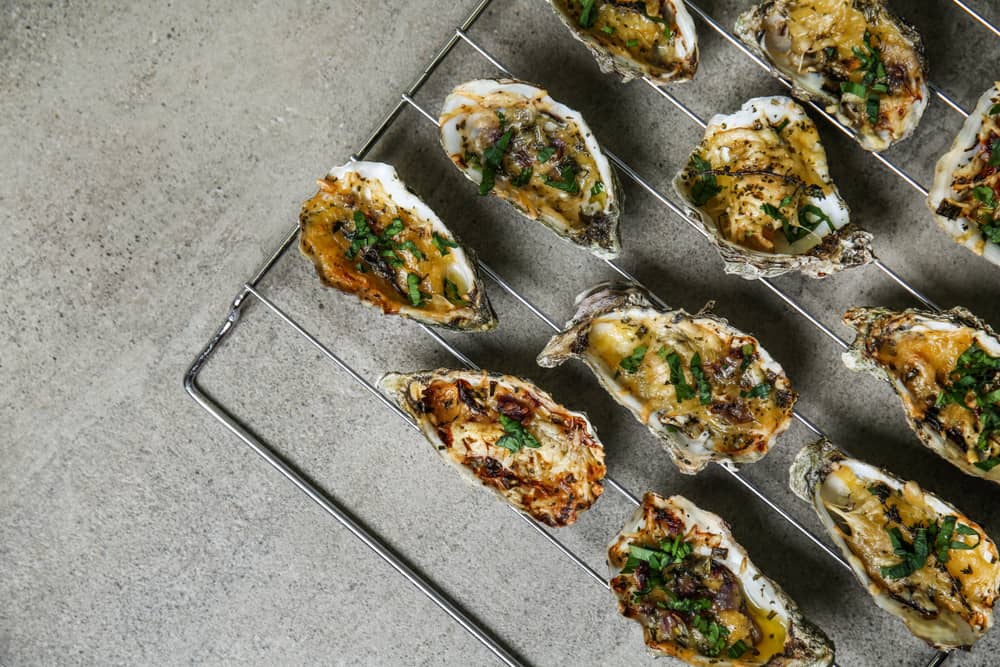
Fresh Oysters, Frozen Oysters, or Canned Oysters: Which Is Best to Use?
In addition to live oysters (also known as a raw oyster), you can find frozen oysters and canned oysters or canned smoked oysters in a store or local seafood shop. Which one should you use? That depends on the meal you want to make.
The canned oyster is usually used as more of an ingredient than the star of a dish. Because they’re canned, they do taste different from fresh oysters. Still, they’re good for use in soups, chowders, casseroles, and other dishes where you want some oyster flavor, but they don’t need to really stand out.
Fresh and frozen oysters can be used interchangeably, in most cases. Frozen oysters do have a slightly different texture once they’ve been thawed, though, which is why many people prefer not to eat them raw like they would live oysters. However, frozen oysters that become cooked oysters aren’t much different from fresh oysters once cooked.
How to Shuck Oysters
Shucking oysters is necessary if you want to eat them raw. Otherwise, you’d usually just cook them right in the shell. Once the shells open up is an indicator that the oyster meat is cooked. But, for raw consumption, you’ll want to shuck each oyster to get the oyster flesh out. You’ll also need to shuck oysters if you want to bake or grill them in their shells.
To shuck oyster shells, you’ll ideally need an oyster knife fit for the job. But if you don’t have an oyster knife, a regular butter knife can work. Also, make sure you use a dry towel or oven mitt to hold the oyster shell and keep it steady as you shuck oysters.
To start, hold the shell with the flatter side up and cupped side on the bottom. Insert your knife between the two shells at the end right near the hinge. Now, twist your knife blade near the hinge to pop it open. You should now be able to continue to slide the oyster knife through the rest of the shell to remove the top one.
Use your knife to cut the oyster meat from its bottom shell. You can choose to remove the meat from the shell at this point or leave it in the shell with its oyster liquor to enjoy together. If you won’t be consuming your shucked oysters right away, be sure to keep them chilled on ice until you’re ready.
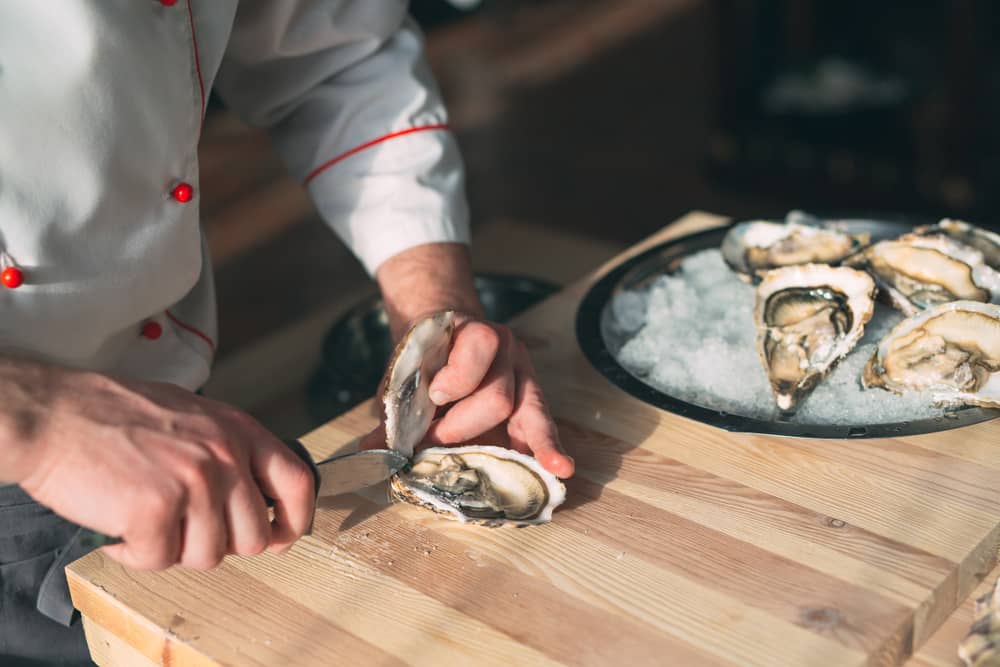
How to Cook Oysters: Top Tips
You can cook oysters in so many ways that there’s no wrong or right way to do it. However, there are some handy oyster cooking tips that can help you get it right, no matter what way you choose to cook them:
- Important: Oysters that are already opened and don’t close back up their shells when you touch them are dead; don’t consume them.
- Before shucking oysters, place them in the freezer for about five minutes to make them easier to open.
- Watch your oysters carefully as you cook them. Overcooking them can make them really tough and chewy. The shells just need to open slightly as evidence that they’re cooked. Then, allow them to rest for five minutes or so.
- Serve raw oysters on ice to keep them chilled at a safe temperature.
- Oysters don’t require much salt, as they’ll already have salty ocean flavors, so be careful when seasoning them. Pepper, garlic, parsley, lemon zest, and chives all work to enhance the flavor of oysters.
- If baking oysters, don’t overcrowd the pan. Keep oysters on a single layer on your pan to allow the meat to cook thoroughly. Add a little bit of olive oil, lemon juice, or garlic butter over each oyster to keep them moist and flavorful as they bake.
Now that you know how to cook oysters, shuck oysters, and serve oysters, you’re well on your way to being an oyster connoisseur. Grab melted butter or garlic sauce and get ready to enjoy this delicacy at home. And, don’t forget to order fresh lobster and other seafood online to round out your meal from Maine Lobster House

